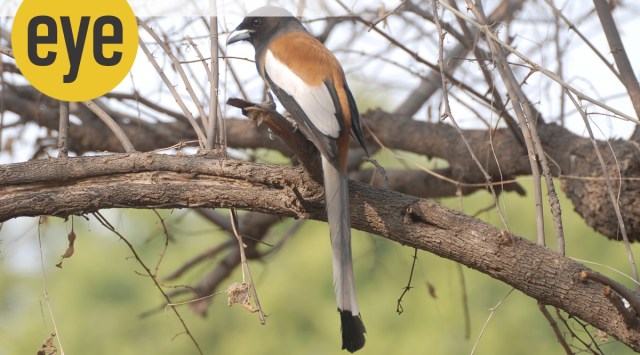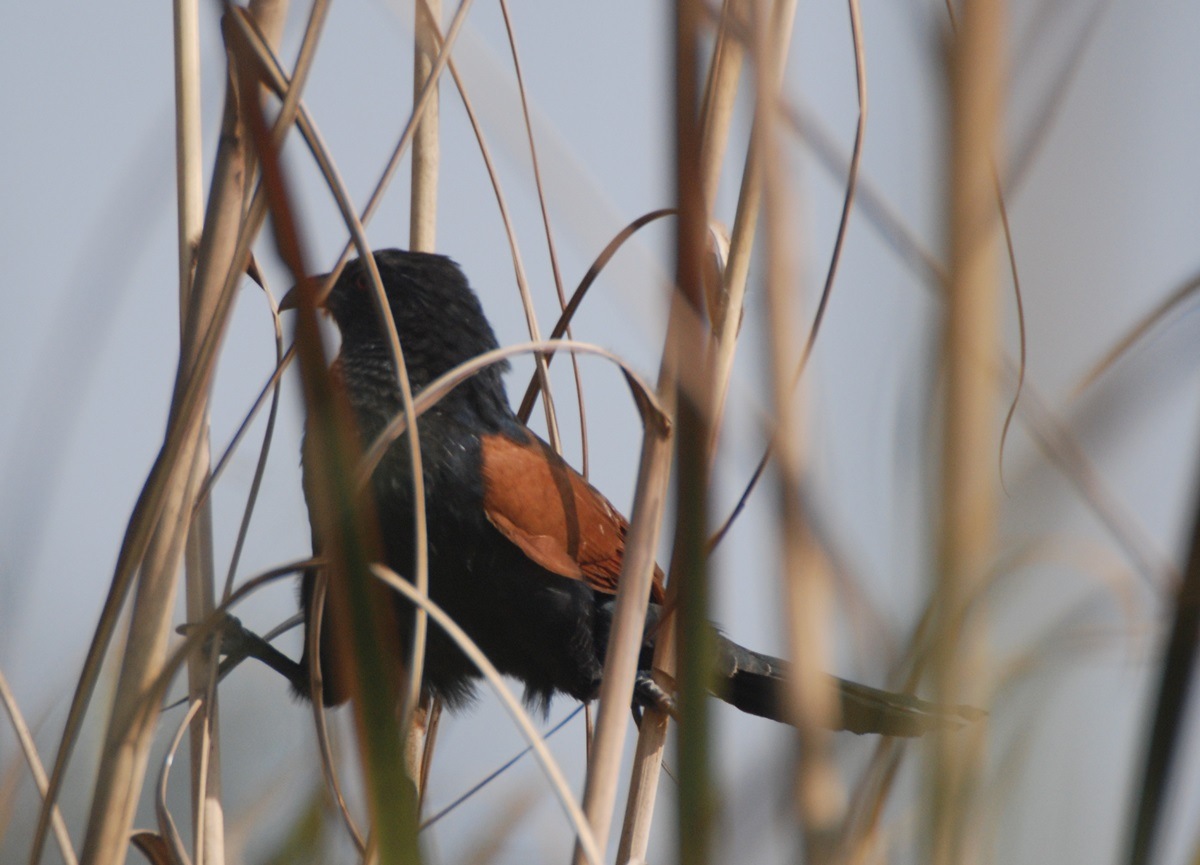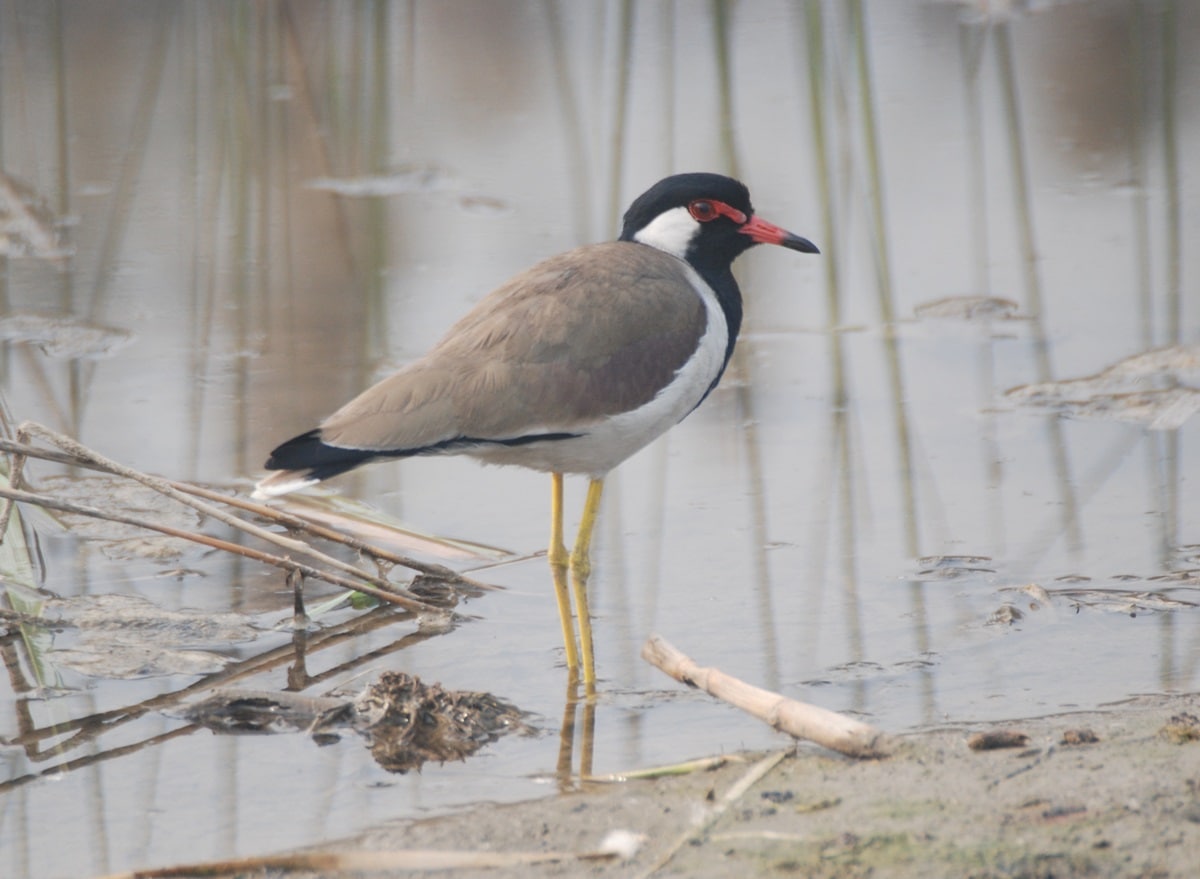Why listening to birdsong is like listening to some great philharmonic orchestra
They lighten your mood and point you to the joys of nature
 The tree pie (Credit: Ranjit Lal)
The tree pie (Credit: Ranjit Lal)While most bird calls and songs leave you happy or nostalgic or even ridiculously sentimental, some can be downright scary if not malevolent. Decades ago, on one of our very first excursions to the Delhi Ridge, late one evening, we lost our way. The pathway meandered through shadowy keekars, their thorny branches extended. To one side, partially hidden by reeds, a scummy green pond festered. We had been warned about walking here at dusk: the jheel had a reputation for being haunted. And then, out of the gloom, came this echoing call: “whoop-whoop-whoop!” We quickened our pace: the only saving grace was that the dog seemed least concerned as she nosed around inquisitively. Later I found out that the whooper in the reeds was the coucal or crow-pheasant, a hulking russet and black member of the cuckoo family, who did not drop its eggs in other birds’ nests like cuckoos did, but who did, indeed, actively seek out these nests (and terrorised nestlings, no doubt) in search of baby birds and eggs.
Speaking of cuckoos, the koel, of course, has diddled us just as it has diddled that smarty pants, the crow. We (and so many film-makers) have associated its mellifluous “kuoo-kuoo-kuoo” call, rising in pitch, to romantic running around trees in the rains: Actually, it’s just two blood-eyed males trying to out-shout each other for the favours of a lady. When you hear the call progress to a hysterical “keeo-keeo-keeokeeokeeo”, ending abruptly with a strangled gurgle, you know that mischief is afoot and some poor crow couple is in for a shock some time soon. Then, there’s that other mocking member of the family, the common hawk-cuckoo who, in the peak of summer, will conceal itself in the shade and ad-nauseam call out “brain-fever! brain-fever! brain-fever!” as you trudge around in the blazing sun trying to spot it. More charitably its call has also been rendered as “pee-kahan, pee-kahan?” (“Where is my love?”), in Hindi and “paos ala, paos ala, paos ala” in Marathi, which means “rain is coming”. I’ve never been able to figure out whether this is just sarcasm or optimism on our part. Thankfully to soothe your nerves there is the delightful Indian cuckoo who dolefully keeps on asking for “one more bottle! One more bottle, one more bottle!”
 Whooper in the reeds: the Coucal (Credit: Ranjit Lal)
Whooper in the reeds: the Coucal (Credit: Ranjit Lal)
The spectral barn owl is another bird whose blood curdling shrieks can give you the willies and which has unfortunately given this rat-catcher par excellence a doomsday reputation. The tree-pie, another member of the crow tribe, has a mix of harsh and dulcet calls (including one that sounds like “thocolate!”) that can leave you confused as to the exact character of this rather handsome bird. The red-wattled lapwing is, at this time of the year, completely neurotic and can drive birders to despair as it circles them screaming, “Did-ye-do-it, did-ye-do-it, did-ye-do-it, did-did-did…?” as though it were a lunatic interrogator from the ED or CBI. It is, of course, only trying to keep you away from its stone-coloured eggs, hidden amidst the clods and rocks on the ground but doesn’t realize that all this accusative screaming only confirms the fact that there’s a nest nearby. But it will dive-bomb you, too, or perform the broken-wing display to discourage you further.
Those hunched old fishermen, the herons, are not really talkative, and will usually just emit an irritated croak when you disturb them, before flying off. The poor storks will simply rattle their sword-like bills as a mode of communication. The strong, silent type, you might think, but that doesn’t apply to the cranes whose exultant bugling and trumpeting can affect your mood like few other bird calls can. Many moons ago, I remember hearing a sarus crane (that epitome of marital fidelity) call across a moonlit mustard field: a lonely haunting call, traveling through the night sky, aching for a response. When together, crane pairs will bugle duets to each other and dance exuberantly too, fluffing up their skirts, a performance which has made them hits the world over.
Migratory geese, flying through grey winter fogs and calling hoarsely to one another, can also evoke a sense of wonder and awe as they circle a marsh and land accurately on the water without any computerised instrument landing system. And, if you need comic relief, listen to the ducks! There is something inherently wacky in their voices – no matter what they’re discussing (nuclear proliferation, global warming) you just can’t take them seriously.
 Hysterical screamer: Red-wattled lapwing (Credit: Ranjit Lal)
Hysterical screamer: Red-wattled lapwing (Credit: Ranjit Lal)
If you are still down in the dumps, go out into a field or any vast open ground in spring and listen. From the heavens you’ll hear the non-stop trilling of larks that will lift you right up alongside them. High up, you may see a tiny speck (weighing around 12 gm, perhaps) fluttering in circles, singing non-stop for 10 minutes straight before it suddenly falls silent and parachutes to earth. (And then bounds up again for an encore!) This is like singing while running up a hill at the same time and keeping perfectly in tune.
One of my personal favourite soloists is the blue-whistling thrush that lives in the hills. An otherwise pugnacious bird, it can break the stillness of dawn with a flute recital of such depth, purity and clarity it can leave you with goosebumps for the rest of the day.
But perhaps, the best way to set your mood is to listen to the great morning chorus in a forest or woodland at dawn. It’s like listening to some great philharmonic orchestra striking up, whose theme is that timeless Louis Armstrong number, “What a wonderful world!”
- 01
- 02
- 03
- 04
- 05































